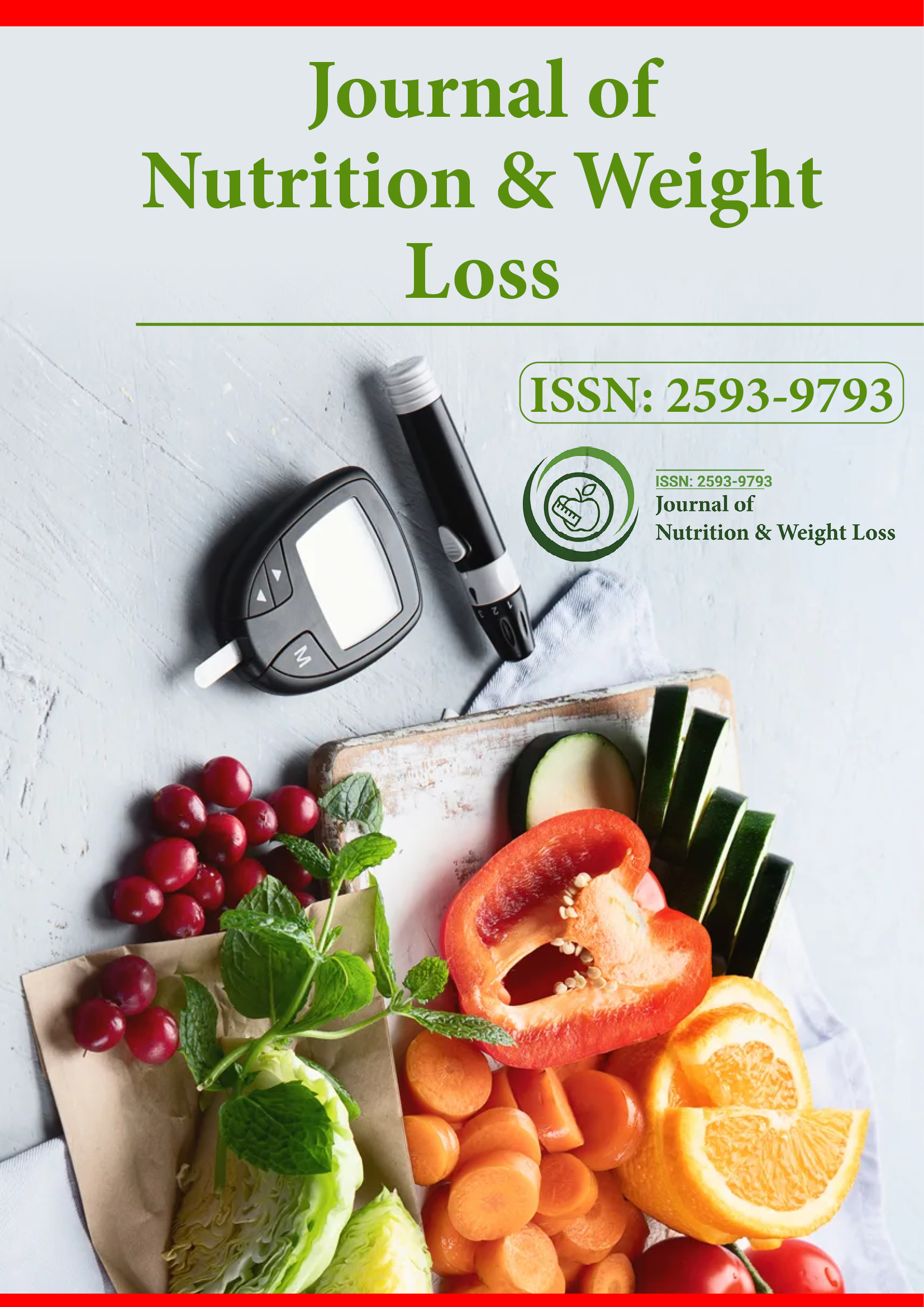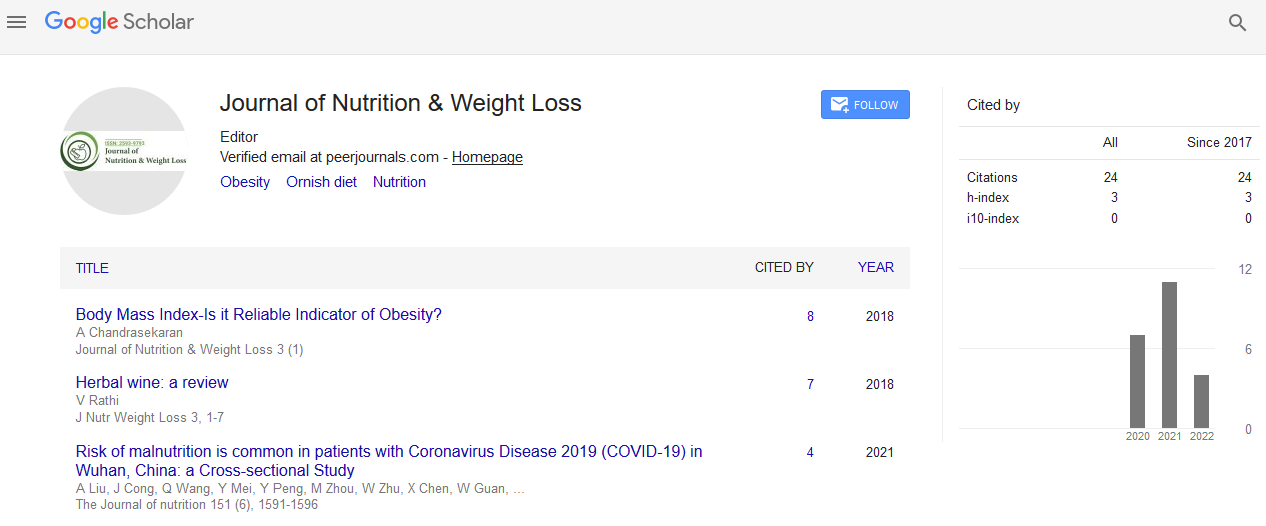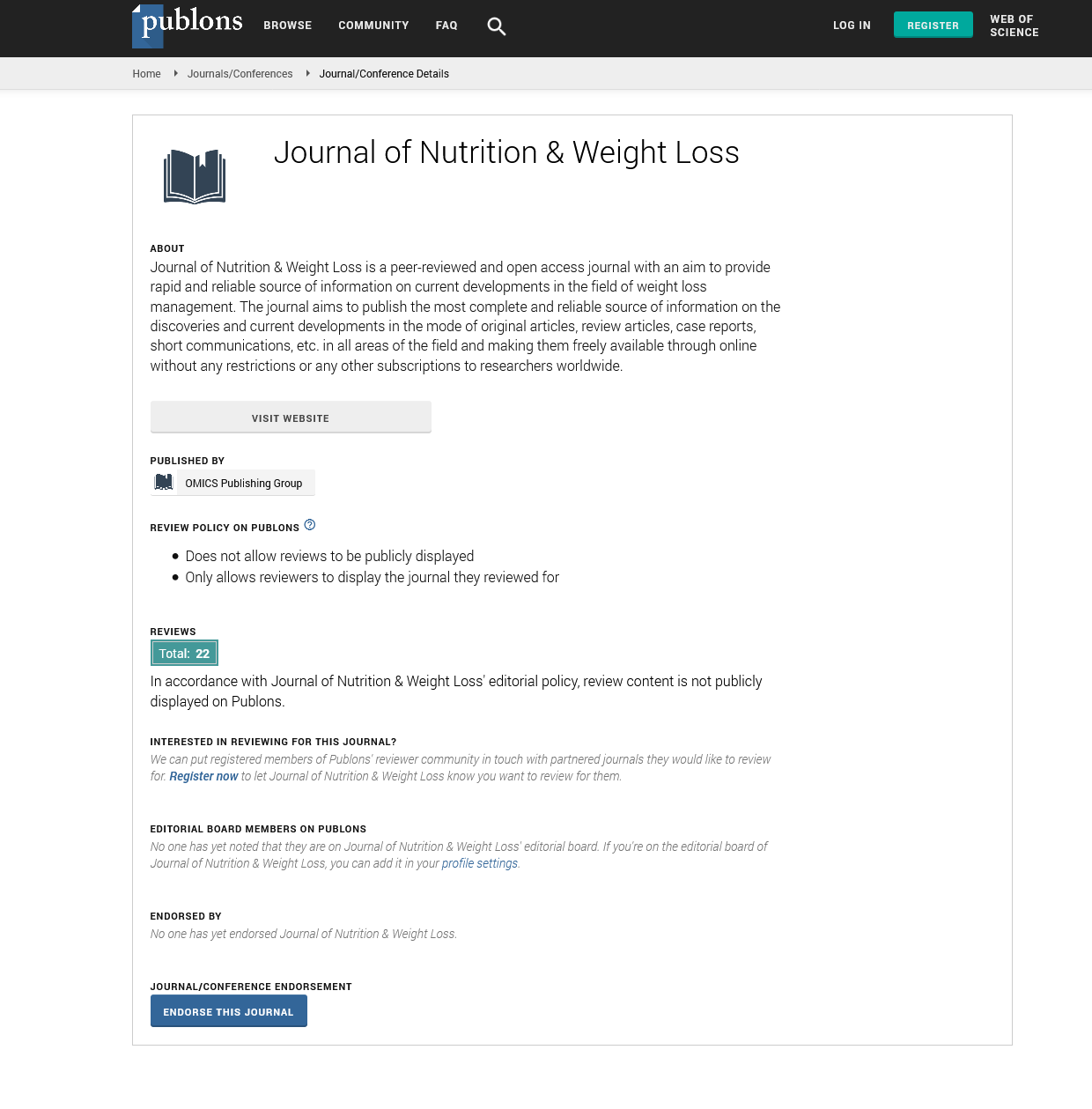Indexed In
- RefSeek
- Hamdard University
- EBSCO A-Z
- Publons
- Euro Pub
- Google Scholar
Useful Links
Share This Page
Journal Flyer

Open Access Journals
- Agri and Aquaculture
- Biochemistry
- Bioinformatics & Systems Biology
- Business & Management
- Chemistry
- Clinical Sciences
- Engineering
- Food & Nutrition
- General Science
- Genetics & Molecular Biology
- Immunology & Microbiology
- Medical Sciences
- Neuroscience & Psychology
- Nursing & Health Care
- Pharmaceutical Sciences
Commentary - (2022) Volume 7, Issue 1
The Role of Exercise in Weight Loss and Weight Maintenance
Michael Philippou*Received: 04-Jan-2022, Manuscript No. JNWL-22-15532; Editor assigned: 07-Jan-2022, Pre QC No. JNWL-22-15532 (PQ); Reviewed: 18-Jan-2022, QC No. JNWL-22-15532; Revised: 24-Jan-2022, Manuscript No. JNWL-22-15532(R); Published: 31-Jan-2022
Description
Fitness refers to a state of physiological health that permits meeting the needs of everyday life or forms the basis for athletic performance, or both. Health-related fitness includes the health- related components of fitness, including cardiovascular health, musculoskeletal health, body composition, and metabolism. In large epidemiological surveys, physical activity and fitness are often used interchangeably, with fitness often considered a more accurate (albeit indirect) measure of physical activity than self-report.
As you lose weight, more physical activity increases the number of calories your body uses for energy or burn. Burning calories through physical activity, along with reduced calorie intake, results in a calorie deficit that leads to weight loss.
Most weight loss is due to reduced calorie intake. However, evidence suggests that the only way to maintain weight loss is through regular physical activity. More importantly, physical activity reduces the risk of cardiovascular disease and diabetes, more so than weight loss alone.
Regular physical activity helps control your weight and can help
Reduce your risk of chronic diseases like type 2 diabetes, high blood pressure and cholesterol, heart disease, osteoporosis, arthritis and some cancer;
Build strong muscles, bones and joints;
Improve flexibility and balance;
Banish depression; and
Improve mood and sense of well-being.
You can reach your goal of at least 30 minutes of moderate-intensity physical activity by engaging in aerobic activity. Aerobic exercise includes any activity that makes it harder for you to breathe when you’re resting and that raises your heart rate. In addition to aerobic activity and strength training, you may want to include other forms of exercise in your physical activity program. Alternatives to traditional exercises offer variety and fun. They can also help reduce stress, increase muscle strength and flexibility, and increase energy levels. Examples of these exercises include yoga, Pilates, and tai chi.
For more than two decades, some scientists have argued that a weight loss focused approach may be misplaced when it comes to managing obesity. Instead, they suggest that a “fatbutfit” approach based on increasing physical activity levels and improving heart health should be the primary goal of people looking to lose excess body weight.
Do up to 150 minutes of moderate-intensity aerobic activity, 75 minutes of vigorous-intensity aerobic activity, or an equivalent combination of both, each week. Scientific evidence demonstrates that physical activity can help you maintain your weight over time. However, the exact level of physical activity required to do this is unclear as it varies widely from person to person. You may need to do more than the equivalent of 150 minutes of moderate-intensity activity each week to maintain your weight.
You will want an excessive quantity of bodily interest except you furthermore might modify your eating regimen and decrease the quantity of energy you`re consuming and drinking. Getting to and staying at a wholesome weight calls for each ordinary bodily interest and a wholesome consuming plan.
Recent surveys show an even greater reduction in the risk of death from any cause and cardiovascular disease. For example, being healthy or active was associated with a more than 50% reduction in risk equivelant was associated with a mortality benefit of approximately 20%. Physically inactive middle-aged women (exercising less than an hour per week) increased all-cause mortality by 52%, doubled cardiovascular disease mortality, and increased mortality by 29% associated with cancer compared with physically active women.
A recent study found that increasing physical activity and improving fitness can reduce the risk of death and health problems related to obesity, even without weight loss. An obesity management approach that focuses primarily on physical improvement rather than weight loss could be at least as effective as weight loss in reducing the harmful health consequences of obesity.
Citation: Philippou M (2022) The R ole of Exercise in Weight Loss and Weight Maintenance. J Nutr Weight Loss. 7:126.
Copyright: © 2022 Philippou M. This is an open-access article distributed under the terms of the Creative Commons Attribution License, which permits unrestricted use, distribution, and reproduction in any medium, provided the original author and source are credited.


